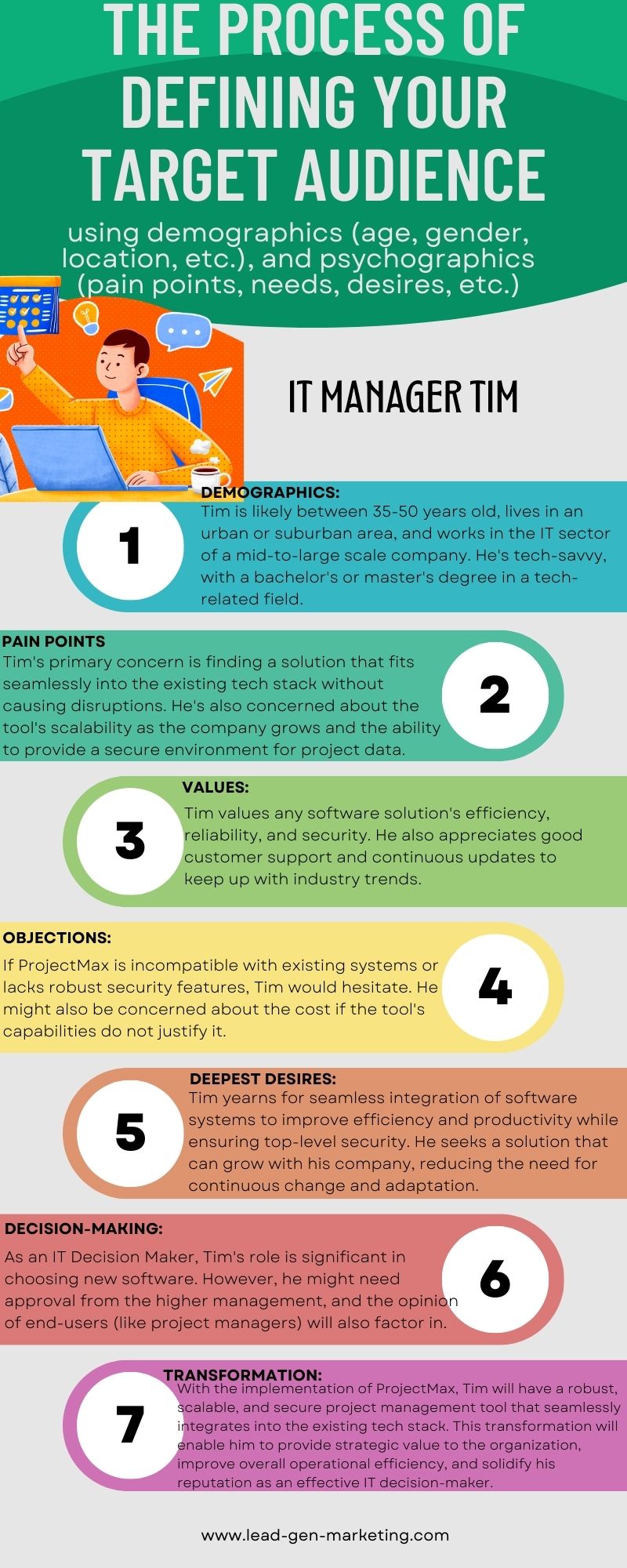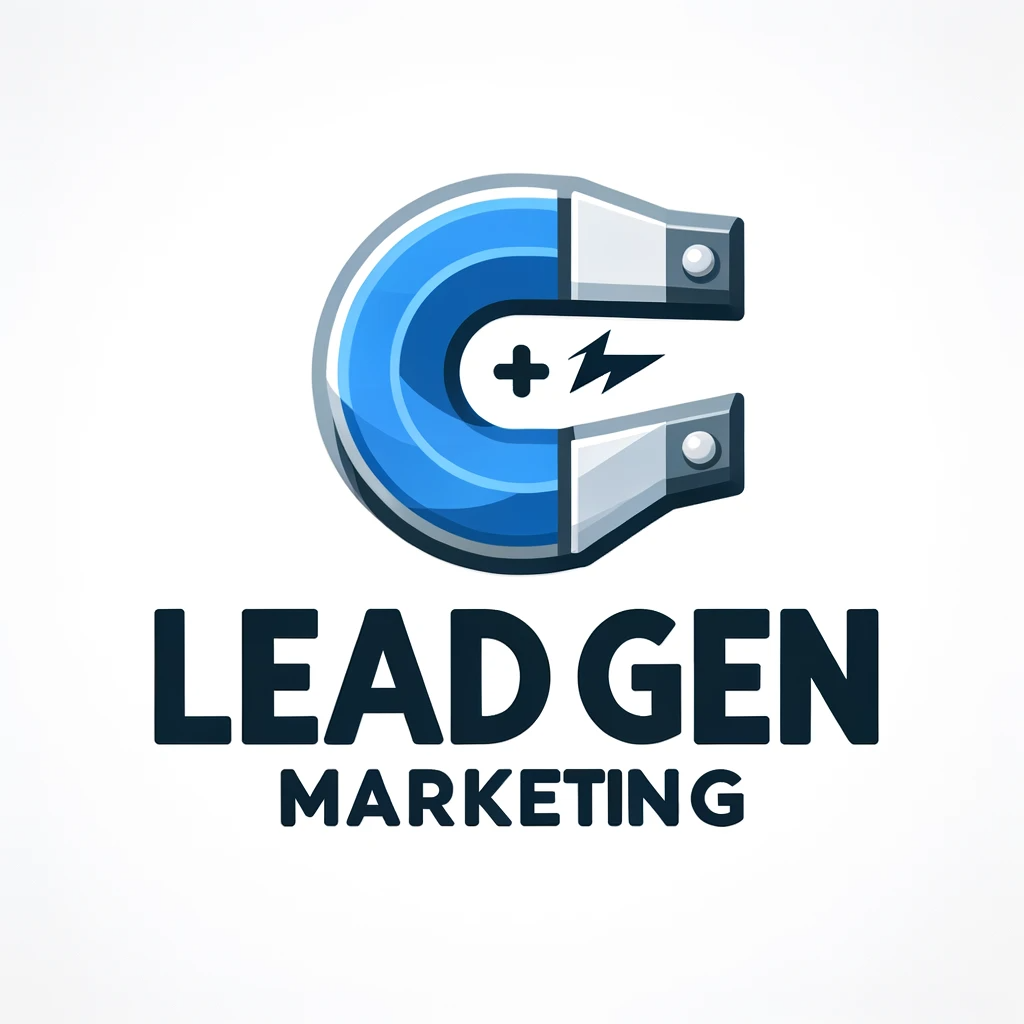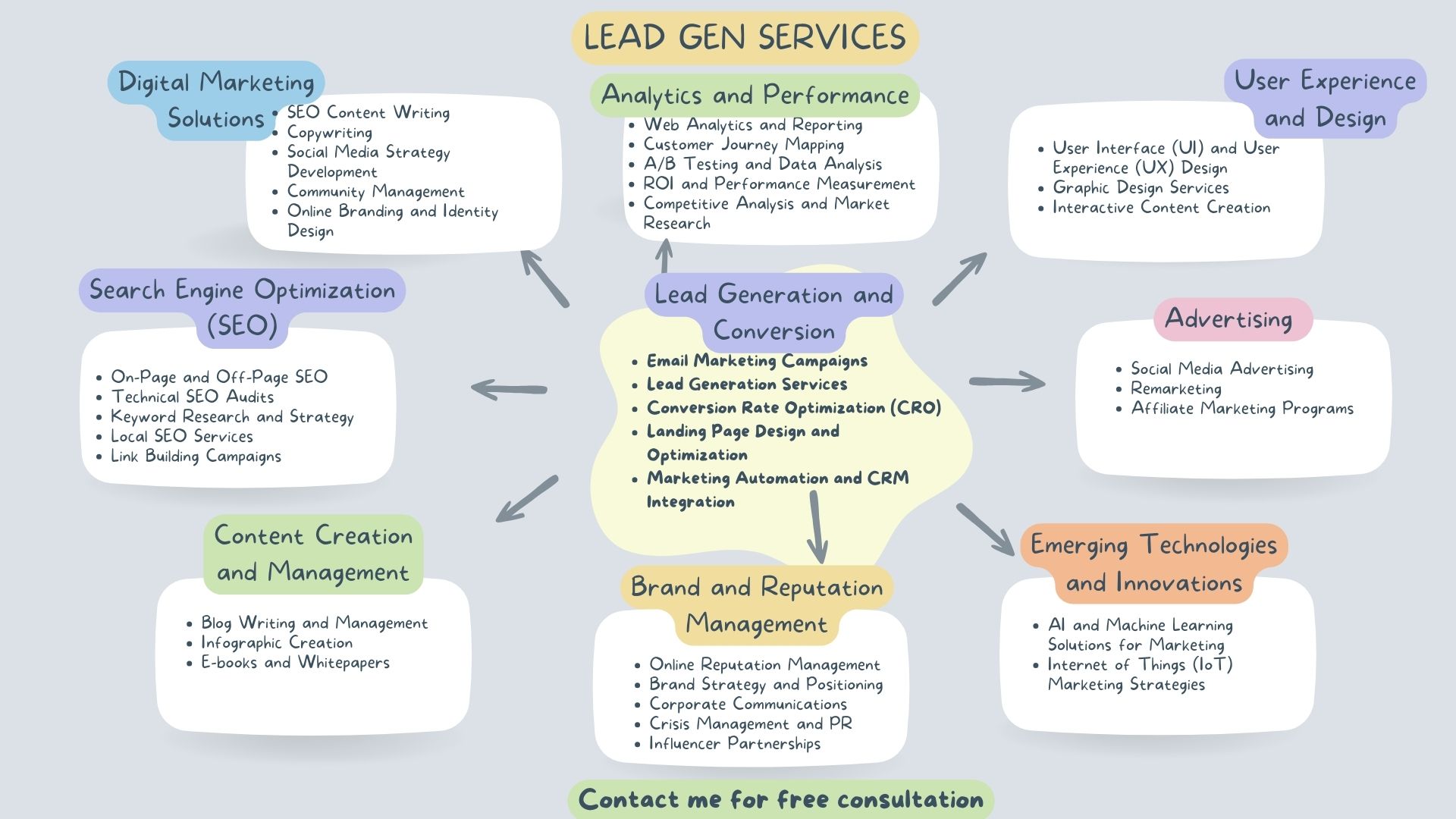You’ve generated some leads for your business – congratulations! Your next step is to engage them. See how lead engagement and the proper lead techniques keep them interested and persuade them to buy from you.
What is Lead engagement?
Lead engagement and lead generation strategies are the keys to turning prospects into customers. It’s the process of communicating with your leads in a way that builds trust, rapport, and value. It’s about creating a personalized and memorable experience for each individual.
It involves understanding your audience and providing relevant, helpful interactions. Benefits include:
- Increased conversions: Engaged leads are more likely to purchase.
- Stronger relationships: Build trust and credibility with potential customers.
- Improved brand reputation: Demonstrate your industry expertise and helpfulness.
But how do you do that? How do you understand your audience, personalize your approach, and communicate effectively?
Continue reading and see:
– Why understanding your audience is the foundation of lead engagement
– How personalization can make your messages stand out and connect
– What communication strategies can help you nurture your leads and guide them through the sales funnel
Let’s dive in.
Lead Engagement: Understand Your Audience
Let’s assume the company offers a project management SaaS solution called “ProjectMax.”
Defining the Product:
ProjectMax is a comprehensive project management SaaS solution for businesses of all sizes. It offers task tracking, resource allocation, team collaboration, integration with other tools, real-time reporting, and advanced analytics. It’s designed to improve project success rates and team productivity and can scale to manage projects of any size.
Identifying the Target Audience:
The primary target audience for ProjectMax is IT Decision Makers and Project Managers working in mid-to-large scale businesses.
IT Decision Makers
Target audience => Tim
He is an IT Decision Maker who decides on the tech stack used by the company. He’s in search of a project management tool that integrates with existing systems and scales as the company grows.

- Demographics: Tim is likely between 35-50 years old, lives in an urban or suburban area, and works in the IT sector of a mid-to-large scale company. He’s tech-savvy, with a bachelor’s or master’s degree in a tech-related field.
- Pain Points: Tim’s primary concern is finding a solution that fits seamlessly into the existing tech stack without causing disruptions. He’s also concerned about the tool’s scalability as the company grows and the ability to provide a secure environment for project data.
- Values: Tim values any software solution’s efficiency, reliability, and security. He also appreciates good customer support and continuous updates to keep up with industry trends.
- Objections: If ProjectMax is incompatible with existing systems or lacks robust security features, Tim would hesitate. He might also be concerned that the cost of the tool’s capabilities does not justify it.
- Deepest Desires: Tim yearns for seamless integration of software systems to improve efficiency and productivity while ensuring top-level security. He seeks a solution that can grow with his company, reducing the need for continuous change and adaptation. He also desires recognition for his ability to select solutions that create significant organizational value.
- Decision-making: As an IT Decision Maker, Tim’s role is significant in choosing new software. However, he might need approval from the higher management, and the opinion of end-users (like project managers) will also factor in.
- Transformation: With the implementation of ProjectMax, Tim will have a robust, scalable, and secure project management tool that seamlessly integrates into the existing tech stack. This transformation will enable him to provide strategic value to the organization, improve overall operational efficiency, and solidify his reputation as an effective IT decision-maker.
Project Managers
Target audience => Patsy
Patsy is a Project Manager constantly looking for ways to improve project delivery times and team productivity. She needs a tool that simplifies task tracking, enhances team collaboration, and offers valuable insights through reports.

- Demographics: Patsy is between 30 and 45 years old, is in urban areas, and works as a project manager in a medium-to-large-scale company. She has a degree in business or a related field.
- Pain Points: Patsy struggles with managing tasks, coordinating with the team, and generating accurate reports. She needs a tool to simplify these processes, enhance collaboration, and provide real-time insights into the project’s status.
- Values: She values productivity, ease of use, and efficiency. A tool to help her team collaborate better and complete projects on time will be highly appreciated.
- Objections: If ProjectMax lacks an intuitive design or does not significantly improve task management and team collaboration, Patsy might object to its implementation. She may also have concerns about the tool’s learning curve and the disruption it might cause during the transition period.
- Deepest Desires: Patsy aspires to streamline her project management processes to enable smoother collaboration and communication within her team. She craves a solution that can provide real-time visibility into project status and allow her to generate comprehensive reports with ease. Her deepest desire is to ensure the timely and successful delivery of all her projects, enhancing her reputation as an effective project manager.
- Decision-making: While Patsy might not have the final say in the purchase decision, her opinion as an end-user will be vital. Her feedback on the tool’s efficiency, usability, and impact on productivity will heavily influence the decision-making process.
- Transformation: The implementation of ProjectMax would revolutionize Patsy’s work processes. She’ll be able to manage tasks better, improve her team’s collaboration, and access valuable insights through comprehensive reports. This would simplify her job and contribute to her team’s productivity, ultimately leading to better project outcomes and elevating her status within the organization.
Tailoring the Message:
For Tim, messages should focus on the robustness of ProjectMax, its integrative and scalable nature, and advanced security features. Patsy should be targeted with messages highlighting the tool’s efficiency, user-friendliness, and collaborative features that simplify project management.
Choosing Marketing Channels:
-
-
LinkedIn: As a professional platform, it’s perfect for reaching Tim, who’s likely there to stay updated with the latest in tech. Ads, sponsored posts, and direct messaging campaigns can be effective.
-
Industry Blogs and Forums: Sponsored posts or guest blogs can reach Patsy, who’s likely seeking tips and best practices for project management.
-
Email Marketing: Both personas can be targeted effectively with personalized emails showcasing the benefits of ProjectMax in addressing their specific needs.
-
Offering Relevant Lead Magnets:
-
-
For Tim, offering a free webinar or a whitepaper on “Maximizing Tech Stack Efficiency with Integrative Tools” can be a great lead magnet.
-
For Patsy, a free eBook on “10 Strategies to Enhance Project Success Rates with ProjectMax” would be appealing.
-
Remember, it’s essential to continuously monitor and tweak strategies based on their performance to ensure optimal CPA lead generation. Do you need additional help? Contact us
Lead engagement: Personalize Your Approach
Here’s how you would apply personalization specifically for Tim and Patsy:
Tim:
For Tim, personalization would involve understanding and applying his specific needs and pain points in your strategy.
Email Marketing: Use dynamic content in your emails. For instance, if you know that Tim is interested in scalability and integration, you can send him personalized emails focusing on your product’s features. Use his name and the name of his company to make the communication feel more personal.
Content Marketing: Create and share content that speaks to Tim’s interests. For instance, you could share blog posts or whitepapers that talk about the importance of scalable and integrable project management tools in growing businesses.
Web Design: Use cookies to track Tim’s behavior on your site. If he frequently visits pages related to certain features of your product, use this data to provide him with personalized product recommendations or prompt him with relevant articles when he visits your site.
Patsy:
For Patsy, personalization means addressing her unique challenges and desires.
Email Marketing: Send Patsy emails that highlight features she might find beneficial, such as task tracking, team collaboration, and report generation. Using her name and referencing projects she’s worked on can make the emails resonate more.
Content Marketing: Provide content that speaks to Patsy’s role as a project manager. This could be blog posts with tips for better team collaboration, articles on generating and interpreting project reports, or case studies showing how your software has improved project delivery times.
Web Design: Just as with Tim, track Patsy’s behavior on your site and use it to personalize her experience. If she is interested in specific resources or product features, ensure those are prominently featured during her subsequent visits.
Remember, personalization aims to make your leads feel understood and valued, which can increase their engagement and move them further down the sales funnel.
Lead engagement: Communicate Effectively
Tim:
For engaging Tim, communication strategies would focus on providing technical insights, showcasing product scalability, and seamless integration.
Follow-ups: When Tim downloads a technical whitepaper or signs up for a product update, send him a personalized thank-you email and suggest additional resources related to integration and scalability of project management systems.
Timely responses: If Tim inquires about a specific feature or asks about a potential integration with his existing software, make sure to respond promptly and thoroughly. Take the time to answer his technical queries and assure him of your product’s capabilities and continuous support.
Value-adding content: Regularly send Tim high-quality content that speaks to the technical aspects of your SaaS solution and demonstrates how it can support his company’s growth. This could be through in-depth articles on data migration, case studies on how your tool has helped similar businesses scale, or webinars featuring product demonstrations.
Patsy:
For Patsy, communication should revolve around enhancing productivity, improving team collaboration, and demonstrating how your product can help her manage projects more efficiently.
Follow-ups: After Patsy signs up for a free trial or downloads a guide on optimizing project management, thank her for her interest and suggest additional resources that could help her improve her project delivery times.
Timely responses: If Patsy leaves a comment on a blog post or asks about your software’s reporting capabilities, respond quickly and provide the needed information.
Value-adding content: Send Patsy content that aligns with her role and needs. This could include tips on leading a team effectively, advice on tracking project progress, or personalized product recommendations highlighting how your tool can streamline her work and improve her lead generation and prospecting.
In both cases, the key is to show Tim and Patsy that your company understands and cares about their specific needs and challenges, which can strengthen their trust in your brand and move them further along the buying journey.
Conclusion:
In conclusion, lead engagement plays a pivotal role in maintaining the interest of potential clients and converting them into loyal customers. By prioritizing and implementing effective lead engagement strategies, businesses can forge meaningful connections, nurture leads effectively, and ensure the longevity and success of their operations.
Remember, an engaged lead is more than just a potential customer; it is a valuable asset that, when nurtured correctly, can transform your business by driving sales and fostering brand loyalty. Implementing robust lead engagement strategies and being consistent with your efforts can help your organization stand out in a competitive market, facilitating long-term success.
Whether you are just starting or looking to revamp your current approach, the value of lead engagement cannot be understated. But embarking on the journey of lead engagement alone can be daunting. With our expertise, you won’t have to.
As a leader in this field, our team has the skills and tools to provide optimal lead engagement strategies tailored to your business needs. We take pride in our ability to deliver results-driven lead engagement strategies that resonate with your audience and spur them into action. We know everything about website bot detection. You will get 100% real leads.
In conclusion, lead engagement is the key to sustainable business growth. As you ponder the next steps for your business, consider the immense value of effective lead engagement. Are you ready to leverage lead engagement to unlock unprecedented growth?
Let’s embark on this journey together. Reach out to us today, and let’s ignite the full potential of your business through innovative and effective lead engagement strategies.




No responses yet